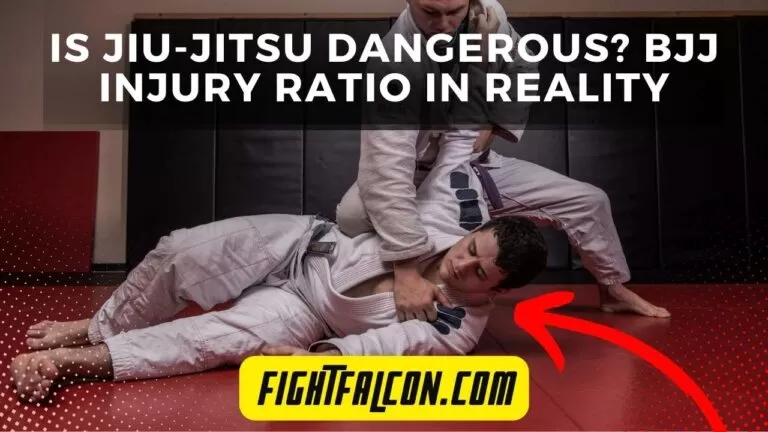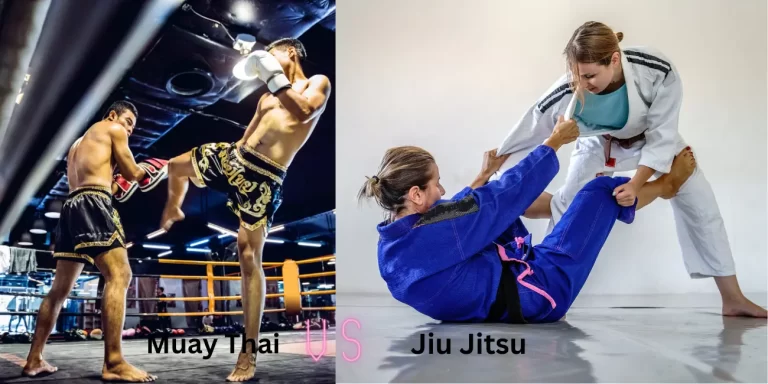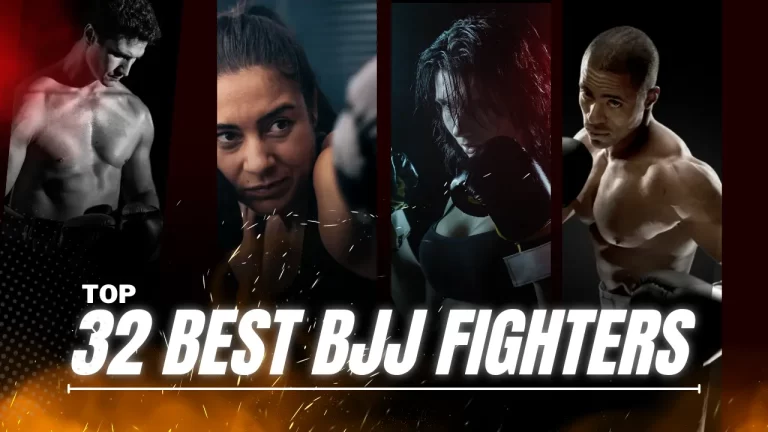What Is Jiu-Jitsu? (An Ultimate Guide)
If you love watching martial arts and care about your physical health, you should check out Jiu-Jitsu. Even if you are a martial arts lover, you still need to learn about Jiu-Jitsu.
So, What is Jiu-Jitsu? Jiu-Jitsu is a ground or grappling-based martial art that means “Gentle Art.” This art focuses on the ground fighting to control a stronger opponent attacker. Fighters must defend themselves by striking and submitting their opponents with Joint locks, chokeholds, and arm bars.
This was a short intro about Jiu-Jitsu. Now, I will let you learn all the essential things about Jiu-Jitsu. I am very excited to explain Jiu-Jitsu and hope you are also excited to learn. Let’s stop waiting and get straight to the article.
What is Jiu-Jitsu?
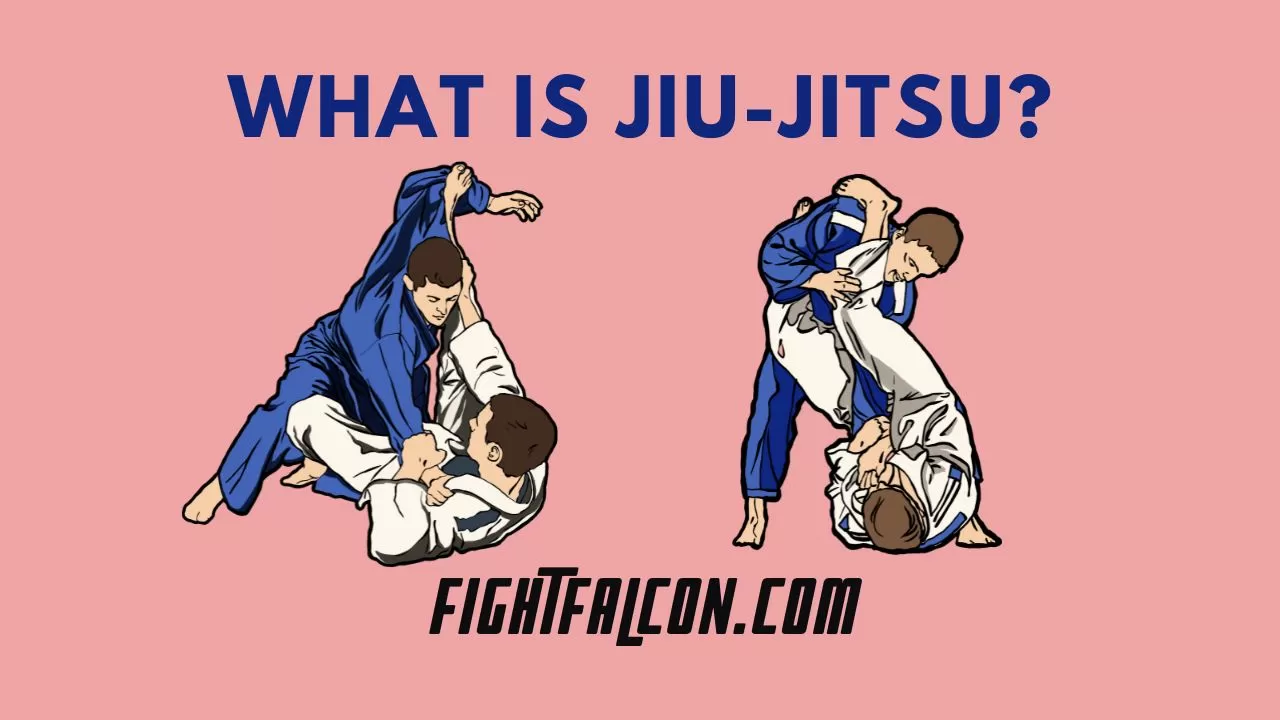
Jiu-Jitsu is ground-based art in which a person fights to defend himself against his opponent. Fighters put-off their opposite person to the ground because fighting becomes more accessible when the opponent is lying on the ground.
This is the technique to have reasonable control over the opponent during Jiu-Jitsu. This art is known as Jiu-Jitsu, which means “Gentle Art.”
Jiu-Jitsu is a non-violent submission that uses essential leverage, pressure, timing, and human anatomy principles. The best part of this martial art is that it focuses on the “Grappling” technique instead of joint locks or chokeholds.
History of Jiu-Jitsu
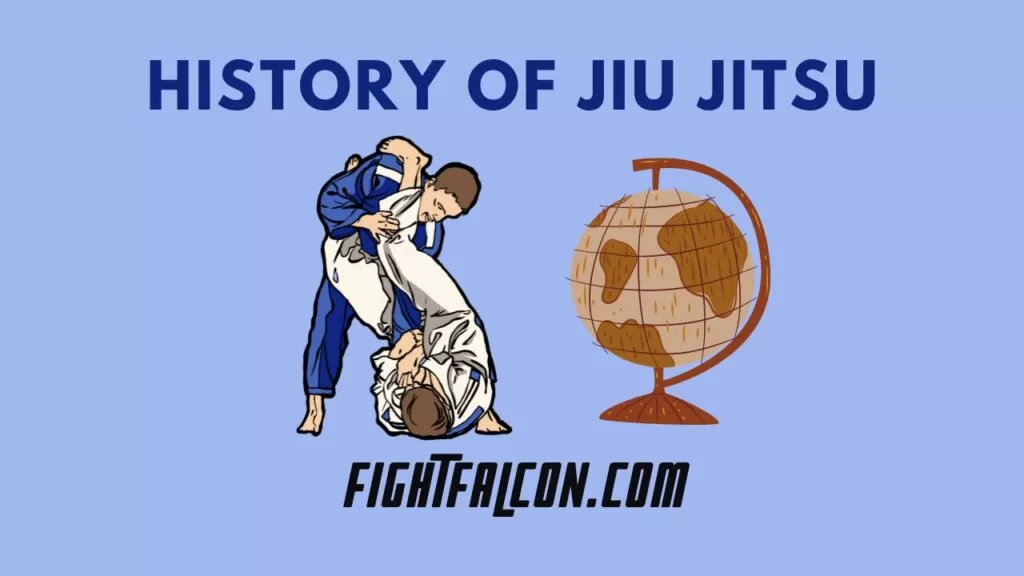
There are various theories that people believe, but the most authentic that most people agreed was Jiu-Jitsu started 14,000 years ago.
History began with the Buddhists who needed to travel a lot and protect themselves from robbers and attackers while traveling. As time passed, Jiu-Jitsu spread to Feudal Japan, where this art had an impressive effect during the war.
At the end of the 19th century, some Jiu-Jitsu experts moved to different continents from Japan to teach martial arts. They also took part in fights (during wars as well) and different competitions.
Mitsuyo Maeda was the most skilled martial arts teacher from them. He arrived in Brazil in 1915, meeting a Jiu-Jitsu enthusiast named Gastao Gracie.
Gastao Gracie had eight children, three girls and five boys. He brought his oldest son (Carlos) to learn Jiu-Jitsu from Japanese martial arts masters. When Carlos reached 19 years, he migrated to Rio de Janeiro with his family. There he started teaching Jiu-Jitsu and taking part in fighting and competitions.
Carlos gave classes and proved Jiu-Jitsu a way to protect ourselves against physically strong opponents. He beat his opponents, who were physically stronger than Carlos. In 1925, he opened the first Jiu-Jitsu school in Rio.
The school was named “Academia Gracie de Jiu Jitso.” He wanted to prove that a physically weaker person could defeat his physically strong opponent by applying the correct technique.
Brazilian Jiu-Jitsu Belt Ranks

The Brazilian Jiu-Jitsu students pass the ranks to become masters. The Brazilian rank system provides colored belts according to the ranked positions. These colored belts justify the skill level of the fighter. There are six levels given below.
- White Belt: This belt indicates that students know just basics and have beginner levers.
- Blue Belt: The blue belt indicates that the person has learned basics and now moving to learn advanced skills.
- Purple Belt: The purple belt indicates a student who has learned about Jiu-Jitsu and now adapting it as his style.
- Brown Belt: It indicates the person who is near to achieving a black belt and is almost an expert in martial art.
- Black Belt: It mentions a master or expert of Brazilian Jiu-Jitsu (BJJ)
- Red and Black Belts: This is a belt that indicates a Grandmaster. Red and Black belt is also known as “Cord Belt.”
If you want to details to more details of these 6 belt then click on Brazilian Jiu-Jitsu Belt System to explore more.
Belt Ranking By Age:
Adult Ranks
- White ( For beginner)
- Blue (2-4 years are required)
- Purple (4-8 years)
- Brown( 6-10 years)
- Black (8-15)
Youth Belt Ranks
| No. | Belt Ranking Colors |
|---|---|
| 1 | White |
| 2 | Grey |
| 3 | Grey/White |
| 4 | Black |
| 5 | Grey/Black |
| 6 | Yellow |
| 7 | Yellow-White |
| 8 | Yellow-Black |
| 9 | Orange |
| 10. | Orange-White |
| 11 | Orange-Black |
| 12. | Green |
| 13. | Green-White/Green-Black |
| 14 | Blue and Purple at the 16 years of age |
10 Rules Of Brazilian Jiu-Jitsu – BJJ Laws
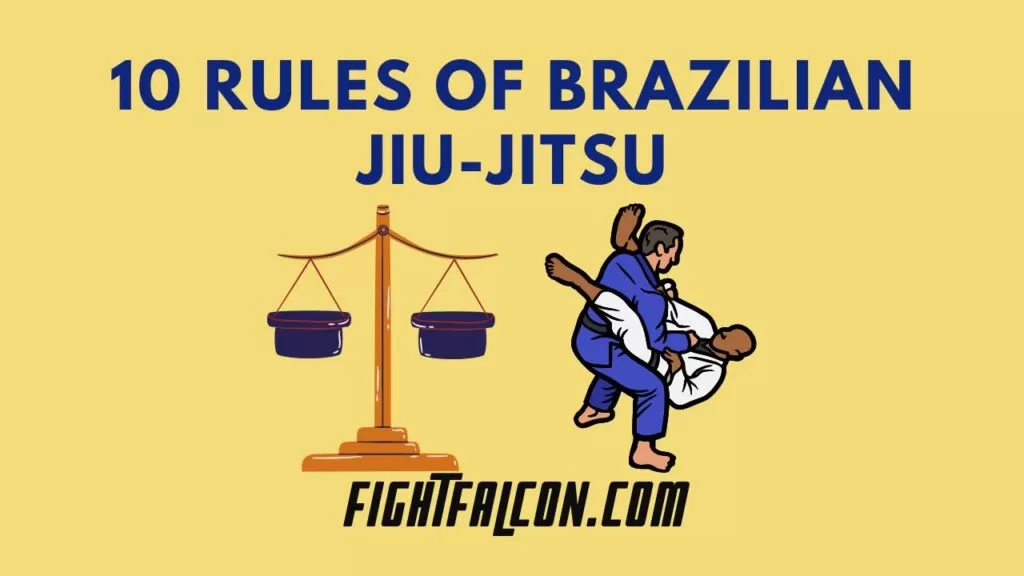
Every sport or martial arts works on some basic rules. Similarly, BJJ also has some rules that are being followed everywhere.
- Fewer Efforts and High Results
- Embrace Sufferings
- Strength vs. Strength
- Create a good control
- Grip on Fundamentals
- You will lose in Jiu-Jitsu
- Choose an Easy, complex, or dumb way
- Never Hold a submission After a Tap
- Respect
- Learn from people around you
1. Fewer Efforts and High results
In simple words, you need to act lazy. Yes, it might sound odd, but this is reality. You need to move less but wisely. Many think that jiu-Jitsu is played with high movements and jumping, but it is invalid.
All you need to practice and learn is the right time of movement. You should know when is the right time to move with concentration. This way, you would put less effort but get high ranks and results.
2. Embrace Sufferings
Suffering is something that you can’t ignore in Jiu-Jitsu. People try to avoid suffering, due to which they progress slowly.
When you just start learning, there is always someone better than you, and you need to embrace the suffering. There would be a time when you start enjoying Martial arts by heart, and learning would become more manageable.
3. Strength vs. Strength
Applying strength against strength doesn’t work every time, especially in Jiu-Jitsu. It would be best if you lost as much as possible instead of using your strength against your opponent. Do not use strength but try to go around the strength. It will help you to defeat the opponent.
If you want to learn Jiu-Jitsu for self-defense, you can also try Kickboxing for self-defense, as it is also a good option to learn new things.
4. Create a Good Control
Taking control of your opponent in BJJ is a difficult task. The best way to control your opponent is to abstract his movement wisely.
No doubt, learning control over your opponent is not easy and is a time taking process. It also takes a good time to learn, but the game will be yours once you learn the trick to control the opponent.
5. Grip on Fundamentals
Fundamentals are critical to learn in every sport or art. Once you master the fundamentals of the martial art, you will be a master to win.
You should polish your fundamentals throughout your career. But it will benefit you if you work and give yourself good time to practice the fundamentals.
6. You will lose in Jiu-Jitsu
Becoming an expert by losing when you start something is possible. You don’t become an expert without practicing; failure is expected while practicing.
Then you don’t need to lose hope and abandon trying. Everyone becomes a master after failures. Therefore accept this truth before you start Jiu-Jitsu.
7. Choose any Easy, Hard, or dumb way
Remember, you won’t find any wrong or proper rules in Jiu-Jitsu. You just need to follow an easy, Hard, or Dumb way that helps you progress. You can choose anyway, but it should be a reliable way.
8. Never Hold a Submission After a Tap
This happens during Jiu-Jitsu when some people let go of the opponent because they do not grab everything properly.
If someone taps, try to respect the tap and say it’s normal. Let it go when someone taps unexpectedly from a specific position. Follow this rule strictly because it is vital to rank.
9. Respect
Respect is essential in every field because without giving respect, you can’t get it and indirectly would not be able to learn anything. You have to respect your opponents, your coaches, and everyone around you.
Don’t forget to respect your opponent no matter how eager you are to win because he is providing his body to you.
10. Learn from everyone around you
Learning is fundamental to get progress and ranking higher. You cannot just learn from higher belts and instructors; instead, you can also learn from white and blue belts. Always be ready to learn from everyone around you.
How is Jiu-Jitsu Different from other Martial Arts?
We know there are various other martial arts. Jiu-Jitsu is more effective because it is a defense and a spot.
Other Martial Arts like Karate, Krav-Maga, Kickboxing, and Taekwondo use strikes, kicks, and punches. But during BJJ, a person defends himself by using Joint locks and chokeholds. Judo is the most similar martial art to Jiu-Jitsu. The main difference between both is the rule difference.
5 Benefits of Jiu-Jitsu
Following are the five benefits of Jiu-Jitsu;
- Create a good community.
- Helps you in self-defense.
- The best sport for physical fitness.
- Gives you stress relief.
- Helps in developing confidence.
Just like Kickboxing benefits, Jiu-Jitsu also has many benefits for both physical and mental health.
People Also Ask
Are Jiu-Jitsu and MMA are same?
No, Jiu-Jitsu and Mixed martial arts (MMA) are different. BJJ is a defense Art that focuses on ground-based or grappling-based fighting. In contrast, MMA focuses on striking, kicking, or punching.
Is hitting allowed in Brazilian Jiu-Jitsu?
No hitting is not allowed in Brazilian Jiu-Jitsu. This is because BJJ is just a defense art; no striking is allowed while Jiu-Jitsu. You can defend yourself just by controlling your opponent.
What is Jiu-Jitsu good for?
Jiu-Jitsu is best for self-defense. Initially, it was introduced for defense purposes. Jiu-Jitsu is also suitable for physical fitness and mental health; it reduces stress.
Conclusion
When you start watching martial arts, you get involved profoundly and learn new terms. But you don’t know about many of the terms.
Similarly, many of you are unaware of the word Jiu Jitsu which means “ Gentle Art.” This art was started for defense purposes.
I have explained all the vital information about Jiu-Jitsu above in the article. I hope now you are clear about what is Jiu-Jitsu.
If you’re a female you can also check our guide on Kickboxing for females, so that you can understand whether you should start learning kickboxing or Jiu-Jitsu.

